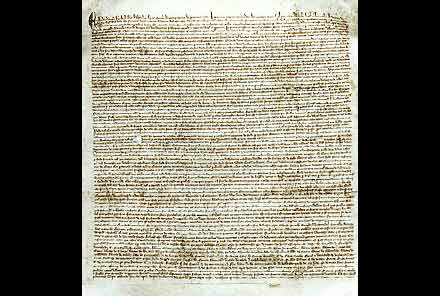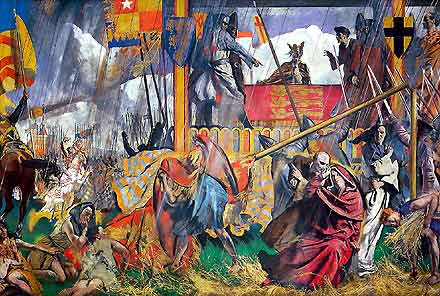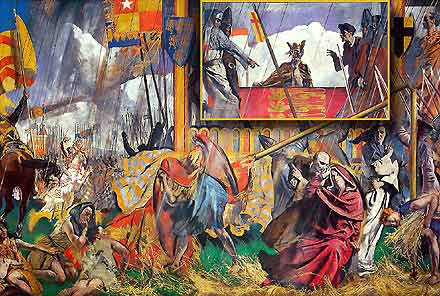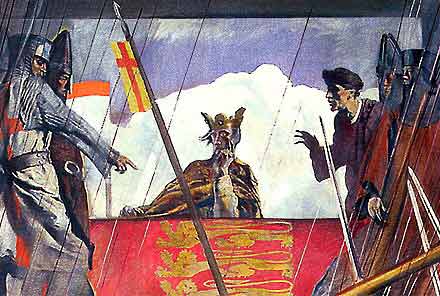Magna Carta
© 2007
Armchair Travel Co. Ltd. - This page may be used for non-commercial purposes
ONLY!
![]()

[ Play
Narrated and Animated Movie ! ] Magna Carta, or Great Charter, was the charter of English liberties extracted by the barons from King John in 1215 under the threat of civil war. The Exchequer had been emptied by huge expenditure on the Crusades and the loss of Normandy to the French, when John began taxing the church severely - much to the annoyance of the barons and church leaders. The Archbishop of Canterbury was at the forefront in demanding a grant of liberties from the king which became the 'Articles of the Barons', from which Magna Carta was drafted. It was sealed by John at Runnymede on June 15th 1215.
Magna Carta contained nine groups of clauses, of which the first three dealt with the rights of the church, of royal tenants, and of sub-tenants. Another group provided for the rights of towns, trade and merchants, and a large group of clauses concerned the reform of law and justice. Lastly, and very significantly, other clauses bound the king not seriously to infringe the charter. If he did, a council of 25 barons were permitted to wage war against him.
Magna Carta became the statement of basic principles of the law rather than the code itself. Four originals still exist, two in the British Museum and one each in Lincoln and Salisbury Cathedrals.
Magna Carta contained nine groups of clauses, of which the first three dealt with the rights of the church, which should henceforth be free; the rights of royal tenants, and sub-tenants. Other groups dealt with royal forests, the behaviour of royal officials, and contemporary issues such as the dismissal of foreign mercenaries. Another group of clauses provided rights for towns, trade and merchants. A large group concerned the reform of law and justice and lastly, and very significantly, clauses provided the security that the king should not seriously infringe the charter. If he did so, a council of 25 barons were permitted to wage war on him. Clause 39, which is justly famous, provided that 'no free man shall be imprisoned or dispossessed except by the lawful judgement of his peers or by the law of the land'. National and state constitutions in America look back directly to Magna Carta, some even using similar text.
After John's death, attempts were made to keep the charter up to date, but the last revision in 1225 by John's son Henry III, was again re-issued in 1264 and later embodied by Edward I on his new statute rolls in 1297. It had become the statement of basic principles of the law rather than the code itself. Four originals still exist, two in the British Museum and one each in Lincoln and Salisbury Cathedrals. Durham possesses the revisions of 1216, 1217 and 1225.
[ Virtual
Tour ] [ Main Topics
Index ]



Additional Information on
Magna Carta
Explore-Parliament.net: Advanced Category Search
Keyword Categories:
_Object_Document
_Event_Historical
_Magna